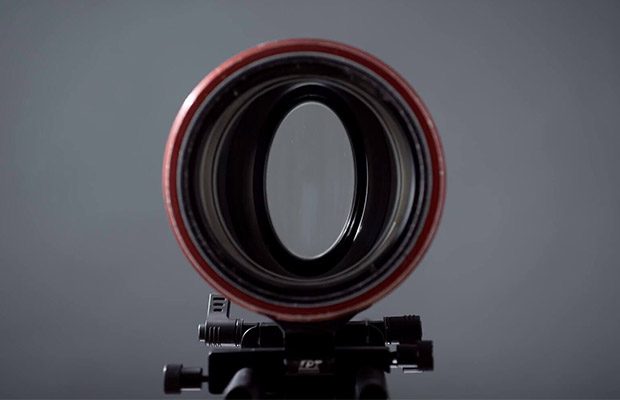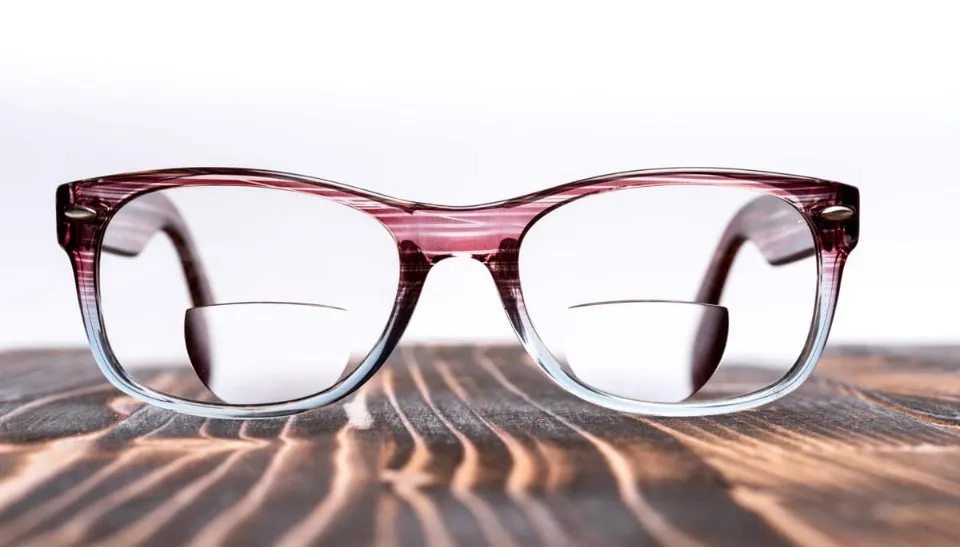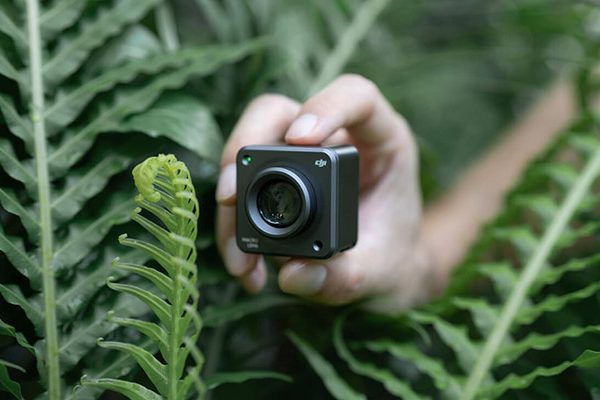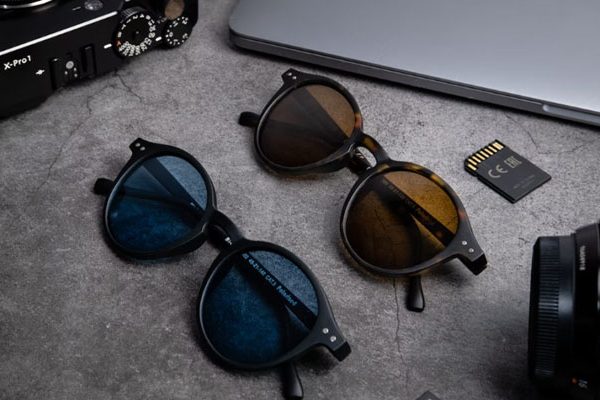What is an anamorphic lens? Anamorphic lenses are specialized equipment that modifies how images are projected onto camera sensors. Cinematographers have grown accustomed to them since they were first introduced, even though they were primarily developed so that a wider variety of aspect ratios could fit within a typical film frame.
The main issues with anamorphic lenses in the digital age are covered in this article.
Table of Contents
What Is An Anamorphic Lens?
Imagine a closed door with the widescreen cinematography we are familiar with from all of our favorite blockbuster movies behind it. The anamorphic lens should then be taken into consideration; it’s essential.
Over time, anamorphic lenses have emerged as a clear favorite for everyone from seasoned cinematographers to burgeoning independent filmmakers. These lenses are the absolute standard in the world of filmmaking thanks to their extraordinarily wide rectangular aspect ratios, long horizontal flares, and distinctive oval bokeh.
Additionally, the anamorphic lens alters the dimensions of an image along one axis, enabling a wider field of view and fitting the same image onto a smaller sensor. By packing more footage onto the sensor, these lenses essentially maximize the use of the sensor.
You May Also Like:
How Do Anamorphic Lenses Work?
A wider view than would typically fit on the recording medium is compressed using anamorphic lenses. A wide field of view and a widescreen image that doesn’t appear overly distorted are provided to viewers by projecting the image, which de-squeezes it. It can be helpful to visualize a sheet of paper that has been gently bent between your fingers to form a convex curve. The top and bottom are unchanged while the image on this piece of paper is warped from side to side.
An additional attachment or lens element is incorporated into standard camera lenses to create anamorphic lenses. The lens maximizes resolution while condensing the amount of visual data. Filmmakers and cinematographers have a wide range of options when using anamorphic lenses because of their variety in depth of field, speed (light sensitivity), and focal length, from wide-angle to telephoto zoom lenses. In order to stretch (or de-squeeze) the image back to its original dimensions when it is finally displayed, a different lens is needed.
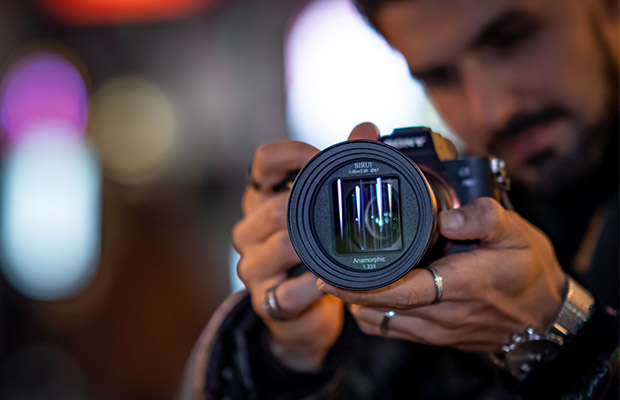
History Of Anamorphic Format
Wider format, high-quality images are produced by anamorphic lenses.
- 1. Spherical lens: By simply bracketing out the top and bottom of the film frame, creating black bars on top and bottom of the film frame image, cinematographers experimented with widescreen images using regular spherical lenses (the standard lens shape). The usable space on the negative was reduced as a result of this process, which resulted in a wider picture but at the cost of some image quality loss.
- 2. Periscope: In order to give tank drivers a wider view than what could be seen through the openings in their armored exteriors, the earliest anamorphic lenses were created during World War I. This tactical benefit was made possible by periscopes with anamorphic lenses.
- 3. Anamorphic widescreen: After television became widely used, anamorphic lenses, like those made by Panavision under the CinemaScope brand, were used to draw audiences back to theaters. With big, ultra-wide screens, Hollywood studios and exhibitors sought to produce an experience that couldn’t be had at home. Anamorphic widescreen, also referred to as full-height anamorphic, produced a cinematic appearance while maintaining the highest resolution.
- 4. Anamorphic adapters: Anamorphic technology has become increasingly popular since the development of digital image-making technology. There are many businesses that make anamorphic lenses, including Arri and Sirui, and iPhones can even use mounts that look like anamorphic lenses. Modern DSLRs, or digital single-lens-reflex cameras, now have high-definition video modes, so these adapters are also available for them. These digital cameras’ sensors—some of which are mirrorless, making them smaller and with fewer moving parts—have extremely high pixel counts and greater latitude, which makes them excellent candidates for anamorphic modifications.
Features Of Shooting With Anamorphic Lenses
The image may slightly change as a result of anamorphic lenses. These effects are viewed as flaws by some cinematographers and directors, while others appreciate the aesthetic and even recreate the effects in post-production. Some characteristics of the anamorphic format include:
- Anamorphic flares: On occasion, images captured in the anamorphic format will exhibit small bars or streaks of light known as anamorphic flares. These blueish, horizontal lens flares shift with the light in the frame, producing an arresting effect. filmmakers Steven Spielberg and J.J. This approach is popularized by J.J. Abrams and Stephen Soderbergh.
- Bokehs: Small, out-of-focus areas in the frame are known as bokehs. Their shape is why they are sometimes called “oval bokehs.” The word “bokeh” stems from the two Japanese words “boke” and “boke-aji,” which translate to mean the beauty of the unfocused areas of an image.
- Distortion: Desqueezing reveals some slight alterations that were made to the image. Early anamorphic systems, like CinemaScope, tended to magnify the image’s center, giving the appearance of a slight magnification. (The close-up quality of these systems was subpar.) Later technology corrected the distortion, but the effect, which can make vertical lines at either side of the image appear to curve outward, is a stylistic choice.
- Wider perspective: One of the best ways to get a wider field of view is to shoot in anamorphic. Exterior shots, like those in Western movies, can benefit greatly from anamorphic optics. To convey a sense of scale and grandeur, a wider angle of view can be very effective.
What Makes Anamorphic Optics Worthwhile To Try?
It is entirely up to you, your personal preferences, and taste when deciding whether to use an anamorphic lens.
The type or brand of your lens is less important than what it can accomplish for your story, as Roger Deakins once said. You have a way with words, Sir Deakins!
By selecting an anamorphic lens, you can also get a large aspect ratio, an extraordinary depth of field, and an eye-catching, oval-shaped bokeh.
The anamorphic lens might be the best option if you believe that your upcoming creation needs a feeling of coziness and intimacy.
Anamorphic Vs. Spherical
The anamorphic and spherical lens classes are typically your options when it comes to production.
Spherical lenses have less transparent glass and less complicated mechanics. They frequently result in sharper images with less overall distortion.
The falloff, reduced sharpness, and increased distortion of an anamorphic lens are frequently used to identify them; the closer to the edge of the image we are, the more distortion and softness we see. Aside from that, the additional glass inside the body results in much more dramatic lens flares.
Frame Size And Aspect Ratio
Before you continue, I should warn you that I’m going to have to use some technical terms in this explanation. The frame size for anamorphic footage will typically be 720×576 for PAL or 720×480 for NTSC. You must stretch them horizontally in order to create widescreen 16:9 non-anamorphic square pixel formats.
Because of a flaw in the flat, spherical widescreen format, anamorphic widescreen was developed. A non-anamorphic lens records the image so that its entire width, but not its full height, fits within the film’s frame.
Fewer Options And More Expensive
The benefits of the anamorphic lens have been discussed in length already. But without pointing out some of its traps, this wouldn’t be much of a guide.
Due to their more complicated construction, anamorphic lenses cost more. Additionally, because most anamorphic lenses are made with 40, 50, 75, and 100mm focal lengths, your options will probably be limited. Spherical lenses, on the other hand, offer a wider selection of focal lengths.
Since spherical lenses are typically faster, their t-stops are lower, like T1.3. to More light is possible with T2. Less light is allowed through anamorphic lenses, which typically have a stop between T2.8 and T4.
Final Product
As a filmmaker, it’s nice to know all that technical stuff, but what you need to know is how the final product looks.
Anamorphic video has a softer, more cinematic, and more artistic feel. Lights and bokeh are either cubic or oval in shape. Your footage will have that appealing appearance thanks to anamorphic flares, which are horizontally stretched. Keep in mind that using an anamorphic lens can increase the cost of a set because it allows you to capture a wider frame.
Considerations For Using Anamorphic Lenses
While these are the primary benefits of using an anamorphic lens, other factors might influence your decision. Here are a few more ideas to think about.
- Vertical or horizontal blue lens flare is produced by anamorphic lenses.
- Larger and heavier anamorphic lenses can be difficult to use on active shoots.
- Only use anamorphic lenses in well-lit environments because they frequently have slow maximum apertures.
- Anamorphic lenses are more expensive and complicated.
- Anamorphic lenses have more glass elements than spherical lenses, but their image quality is frequently less precise.
- Anamorphic lenses come in a smaller selection.
- You will typically work with footage that has been compressed horizontally. This can make framing and composition of shots challenging. Decompression features are a defense mechanism in some modern cameras.
- Vertical lines are frequently distorted by anamorphic lenses.
Tips For Shooting Anamorphic
1. Flare
Shoot straight into the light if a strong flare is required. Shoot from the side or direct the light toward the image’s edges for softer flare.
Be mindful that flares can be annoying and detract from the actual scene. Think about your personal preferences and the material you are shooting as a filmmaker. Just be mindful that using too many flares can be very distracting.
2. Transition Your Lens Flares
Make the lens flare visible, or hide it behind something and then bring it back into view. Consequently, the look and feel are more natural and genuine.
3. Proper Alignment And Distortion
To avoid a distorted image, always double-check the alignment.
Pay close attention to the frame’s edges when using an anamorphic lens. You can position subjects in particular areas of the frame by panning the camera left and right.
When using anamorphic lenses, you are compelled to place the focal point of the image in the center. Because of distortion caused by panning the camera, the image is not nearly as clear, sharp, or precise on the edges as it is in the center.
4. Lens Breathing
The subject in front of the lens morphs and slightly changes when the anamorphic lens is brought into focus.
You can see how the person’s body and face change when you try to focus on the background, for instance.
Therefore, you might not want to have as strong of a rack or as fast of a focus rack when shooting in anamorphic, as it can be a little distracting.
5. Anamorphic Focus Fall-off
In addition to distortion, you must take into account the lenses’ focus and sharpness and accuracy.
Avoid abruptly focusing on the frame’s edge when taking a shot of something significant. When the subject is off-center from the center of the frame, it will not be as sharp.
Anamorphic lenses have much stronger and faster focus-shifting capabilities, which may be a little too distracting for some.
6. The Right Angle And Stabilisation
It is simpler when the sun is lower and the lens is set up to capture footage with amazing flares, but you don’t want the image to be unnatural or to be taken when the sun is at its highest.
With an anamorphic lens, it is even more crucial to get smooth footage; however, you might need to use a gimbal.
You can use these pointers to decide whether to use anamorphic in your upcoming piece. Just like most things in life, practice makes perfect. As you get to know one another, therefore, give yourself room to learn and develop your abilities.
Final Words
Anamorphic lenses are inappropriate for regular filmmaking. However, they can give films a distinctive look that raises production values and aesthetic appeal.
Being prepared will help you greatly because shooting with an anamorphic lens is so different.
Read More: What is a Barlow Lens?

